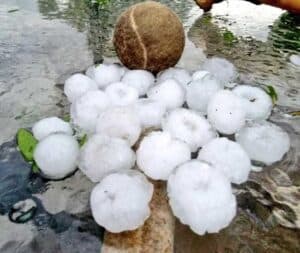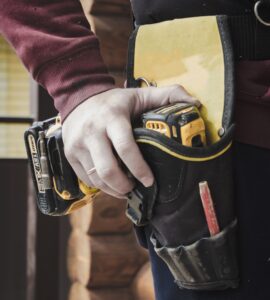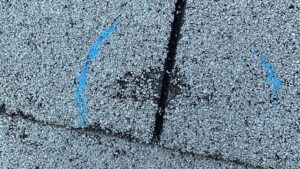Spring rains are coming to Minneapolis. These storms can do a number on your roof and gutter systems. If rain storms bring loud sounds of trickling or rushing from your downspouts you need to find the source and address it. Or maybe you hear them clanging, banging, and rattling at any time.
This isn’t something to ignore.
Downspouts move water away from your house to a place where it can safely drain. This prevents water from soaking into the house’s basement or crawl space, foundation, footing, and grounds.
It preserves the home’s structure, keeps everything dry, and prevents the ground around the house from flooding or becoming waterlogged.
Noisy downspouts can be pretty annoying. At other times, it can be a clue that something’s gone wrong. Either way, here are a few ways to take care of the problem.
5 Things That Can Make Downspouts and Gutters Noisy
So, why are your downspouts noisy? There are several possible reasons. Some are considered normal, while others point to broken or damaged piping.
- Loose Parts
Rattling and banging downspouts can be caused by loose screws and parts. This is a common culprit for older downspouts, especially those that haven’t been maintained in a while.
- Sharp Angles
Sometimes, water will fall straight down the center of a downspout onto the bottom. The sound of it hitting the angled bottom section can be very loud.
- Tears or Breaks
Water can flow through downspouts at a higher volume if it’s trickling out of tears or breaks in the piping.
- Loud Rushing
There can be loud rushing from a high volume of water as it enters, falls down, and exits the downspouts.
- Water on Metal
Water makes noise when it falls onto metal. And certain metal piping, like aluminum and copper, can be extra loud due to how much surface vibrations are formed.
Luckily, there are several ways to dampen this.
Signs of Downspout-Related Damage
Do your noisy gutters represent a superficial or functional problem? The best way to tell is by looking for signs of damage.
- Pooling Water Around House
Water pooling around the house is the first sign that your downspouts aren’t working. This means that the downspouts or gutter systems aren’t effectively transporting water away from the roof and into the property’s drainage system.
Spot puddles or pools of water around or near the house after it rains? That might be caused by landscaping, paving, or grading issues, but it can also be a sign of broken downspouts or gutters.
Even small gaps or breaks in the downspouts can lead to this problem.
- Soggy Ground
Faulty downspouts will have water soaking into the ground. So, walk around the house and see if any areas are soggy.
The best time to do this is after it rains or during spring while the ice and snow are still melting.
- Flooded Yard
Does your yard or pavement flood after it rains? That’s a big clue that your downspouts or gutter system isn’t working correctly.
A property that floods after a normal amount of rain has some sort of drainage issue. Sometimes the problem is caused by clogged or insufficient outdoor drains. Other times, it’s because water isn’t even getting to the drains.
If your yard tends to flood post-rain, check for tears, cracks, breaks, and gaps along your downspouts and gutter system.
- Foundation, Basement, and Crawl Space Water Damage
Rainwater isn’t great for a foundation, whether it’s sitting on the surface or has seeped into the ground.
Soil expands as it absorbs water, then contracts as the water evaporates and the soil becomes dry again. This natural process can wreak havoc on a foundation. These expansion-contraction cycles put pressure on the foundation and can cause micro fractures and small hairline cracks.
Pooling surface water or accumulated subsurface water can exert hydrostatic pressure on the foundation. The water-logged, expanded soil puts pressure on the house and can even push the foundation up.
Once the water dries out, the soil can erode causing the home to settle. This settling process can make the foundation and entire structure twist, flex, and bend out of place.
Have you seen cracks in the external foundation, basement, drywall, or around window and door frames? Are there windows or doors that stick or jam when you try to open or close them?
Those can point to early signs of water damage, which could be coming from the downspouts.
If things have gotten really bad, water will start to leak into your basement or crawl space.
7 Ways to Fix Noisy Downspouts
- Tighten Things Up
A downspout might be banging against the house because some screws are loose. In this case, all you have to do is tighten things up.
- Repair or Replace Them
Downspout noise can be caused by broken or torn pieces. And these need to be repaired or replaced right away.
- Change out the Bottom Elbows
Don’t want to hear water clattering against metal? Swap out metal downspout elbows for plastic or vinyl ones.
The downspout elbow is the curving bottom section that directs water away from the house. Metal gutter elbows can be the sole culprit of noisy downspouts since quite a bit of water falls directly on them.
You can turn down the volume by replacing aluminum or steel elbows with quieter vinyl or PVC ones.
- Sponge it Up
If you don’t want to change the elbows, another option is to place a sponge inside the elbow. Just stick a regular kitchen sponge inside the downspout.
The sponge will absorb and release falling water while preventing it from clanging on the metal.
You can also use other absorbent materials, like a piece of artificial turf, some foam, a foam downspout insert, or even a piece of roofing shingle.
Remember to check sponges periodically and replace them when stagnant or if mold appears.
- Adjust the Downspout Angle
You can adjust the downspout’s lower angle to prevent water from falling right onto its elbow. This is done by using longer gutter attachment pieces to move the lower section farther away from the house.
- Install a path for the water to flow along
You can caulk a rope to the top of the downspout then drop it down. Water will then travel along the rope instead of falling directly down the downspout pipe.
- Insulate Them
You can dampen downspouts by wrapping them in insulation. Downspout-shaped foam insulation sections are available to purchase from specialty manufacturers. Spray foam can also be used around downspouts.
Get noisy downspouts inspected by a Minneapolis roofing company
Hopefully noisy downspouts don’t indicate larger issues, but with inspections being free at reputable roofing companies in Minneapolis, don’t take the chance.





